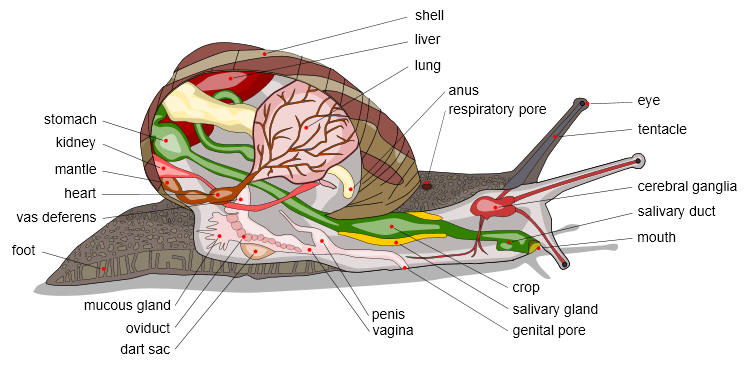Adaptation
As mentioned earlier, the habitat of Neohelix
major is in the southeastern states. This location has
influenced the diversification and adaptation of the shell in
the species
(Emberton, 1995). As discovered in a study done by Kenneth Emberton, environmental
correlations account for 34 percent of size and shape variations
of Neohelix major (Emberton,
1995). For example, larger, flatter, and more loosely coiled shells are
more common in areas that have a higher altitude and less
shelter (Emberton,
1995). Taller shells have been adapted to moist environments because the
taller shells allow Neohelix major to forge through the
ground more easily (Emberton,
1994).
As for other morphologies, like all Gastropoda, members of the
species Neohelix major possess a foot that is used for
movement as well as a mouth, hence the name “mouth foot” (Gillis,
2012). For obtaining nutrients, gastropods possess a radula, that allows
them to, in herbivores, scrape off algae or other plants, and in
carnivores tear off the flesh of their prey. Neohelix major also
have a trademark 180 degree twisting of the visceral mass called
torsion (Gillis,
2012). Gastropods also undergo the process of coiling in the visceral
mass and shell
(Gillis, 2012). This coiling allows for the
organism to be able to gain surface area without sacrificing
locomotion capabilities
(Gillis, 2012).
As
with all of the Pulmonates, Neohelix major breathes air
on land by the use of a functional lung
(Gillis, 2012). Air passes through a small opening on the outside of the body.
Gastropods utilize an open circulatory system meaning the blood
is not confined to the heart or heart vessels but moves through
the irregular tissue and sinuses (Gillis,
2012).
Mollusks are highly cephalized, meaning that their nervous systems are well developed and possess a head (Hickman, 2012). Most mollusks have highly evolved senses of smell, touch, taste and even vision with eyes on top of their tentacles (Hickman, 2012). Continue on to learn more about the species Neohelix major regarding nutrition.
